(a) The polysilicon production process is relatively mature. The existing polysilicon production process technologies mainly include modified Siemens process, silane process, fluidized bed process, and metallurgical process. The modified Siemens process utilizes chlorine and hydrogen to synthesize hydrogen chloride, hydrogen chloride, and industrial silica fume to synthesize trichlorosilane at a temperature of 250-350°C. The trichlorosilane is then separated and purified, and the purified trichlorosilane is The chemical vapor deposition reaction in the hydrogen reduction furnace produces high-purity polysilicon. The polysilicon prepared by the modified Siemens method has high purity and good safety. Compared with the silane method and the fluidized bed method, the deposition rate is highest, and it is conducive to continuous operation. It is the mainstream technology for producing polysilicon, and the most mature technology, the lowest investment risk, the easiest With the expansion, the polysilicon produced accounts for 80% of the total production in the world today. Most of the existing polysilicon in China is prepared using the modified Siemens method.
(b) Polysilicon is not a "high energy consumption" or "highly polluting" industry. Now people often use “refining 1 ton of polysilicon to consume 160,000 kWh of electricity†to determine that the polysilicon industry is a high-energy-consuming industry. This view is one-sided. According to authoritative data, from the perspective of energy consumption per unit of production, under the current technological conditions, China's energy consumption per 10,000 PV modules (including polysilicon refining process) is about 900 kWh (if polysilicon is used alone, when polysilicon is sold at 300 In the case of 10,000 yuan/ton, the energy consumption per 10,000 yuan is 533 kWh. When the polysilicon price is 450,000 yuan/ton, the energy consumption per 10,000 yuan is 3,550 kWh. The energy consumption per 10,000 yuan in the steel industry is approximately At 3,900 kWh, the energy consumption per 10,000 yuan in electrolytic aluminum production is approximately 6,000 kWh. The energy consumption per unit of output in the photovoltaic industry is much lower than that in the iron and steel and electrolytic aluminum industries. At present, the energy consumption per unit of polycrystalline silicon is lower than that of steel and electrolytic aluminum. (Currently, high-energy-consuming industries and products are identified as local energy consumption according to the GDP of RMB 10,000 and industrial added value. There is no absolute number, it is a relative concept, it is a recognition issue.) More importantly, photovoltaic products are a kind of production. Energy products that consume energy during the process and produce energy during use are far more energy-efficient than energy. According to calculations, a 1 MW solar photovoltaic power generation system is installed in an area with medium light conditions in China, and the annual power generation is about 1.3 million kWh; a total of 2.37 kWh of electricity is used for the production and installation of a 1 watt solar photovoltaic power generation system, 1 MW. The production and installation of the solar photovoltaic power generation system requires 2.67 million kilowatt hours of power consumption. It takes only about 2.04 years to recover and balance its own power consumption. The average lifetime of solar modules is 25 years, and solar modules are used to realize production energy consumption. After recycling, it can generate electricity for about 23 years. In other words, the polysilicon solar cell system installed with 2.67 million kWh of electricity will eventually generate 32.5 million kWh of electricity. That is to say, the ratio of polysilicon photovoltaic production to electricity generation is 1:12.2, and the economic and social benefits are very impressive. . Therefore, simply using the energy consumption of polysilicon to identify the polysilicon industry as a high-energy-consuming industry is unscientific and even more objective. It is necessary to remove polysilicon photovoltaics as the hat of high-energy-consuming industries as soon as possible.
In addition, people often say that the polysilicon industry's pollution problem mainly refers to the production of a large number of byproducts of silicon tetrachloride in the production of polysilicon, and silicon tetrachloride has strong corrosion. At present, the improved Siemens method commonly used in polysilicon production plants has achieved complete recycling of silicon tetrachloride. Some polysilicon production companies cause pollution, and have a great relationship with inadequate environmental supervision and insufficient corporate investment. Technically speaking, Silicon chloride can not only be processed, but also can be recycled, and it can be used as a raw material to produce white carbon organic monomers and other products, through the recycling can solve the pollution problem, with the continuous improvement and improvement of the production of polysilicon technology, a large number of four Silicon chloride can be completely recycled.
(3) There is still a large space for the cost reduction of photovoltaic power generation. At present, the high cost of photovoltaic power generation is a key factor in the difficulty of large-scale promotion of photovoltaic power plants, and the high production cost of polysilicon is one of the important reasons for the high cost of photovoltaic power generation. The cost of domestic production of 1 kilogram of polysilicon is mostly in the range of 40-50 U.S. dollars, while the cost of foreign seven polysilicon producers is in the range of 20-30 U.S. dollars. The domestic polysilicon production costs still have a large space for decline. Realizing closed-loop production is the key to significantly reducing energy consumption in polysilicon production. It can reduce production costs through comprehensive utilization of exhaust gas, by-products, and waste heat recovery, while achieving the goal of energy conservation and emission reduction. Most polysilicon companies in foreign countries set up factories, which are mostly combined with chemical companies. They operate in the “chemical group†and can easily realize the “circular economy†within the group and can achieve “zero emissions†of wastes. Leshan “National Silicon Material and By-product Utilization Industrialization Base†uses silicon tetrachloride instead of hydrogenation of silicon tetrachloride for hydrogenation to produce trihalosilane, fumed silica, ethyl silicate, and organic silicon. Products, synthetic quartz and other materials have reduced polysilicon production costs by extending the industrial chain. With the improvement of solar cell module production and construction of large-scale solar power station technology, especially the upgrading of inverters and smart grids, there is still much room for reducing the cost of the entire solar photovoltaic power generation system. At present, some authoritative organizations in the world are optimistic about the future cost of photovoltaic power generation. The most optimistic forecast is that the cost of photovoltaic power generation will be reduced to 1.0-0.7 yuan/kWh by 2015, which will reach the level of traditional power prices. In 2009, the bidding price of Dunhuang Solar Power Station on the Internet was 1.09 yuan. On August 16 of this year, the National Energy Administration’s 280 MW photovoltaic power plant concession project was formally opened in 2010. A total of 50 companies in 13 projects submitted tenders for 135 minutes, ending in August. On the 17th, the minimum price for participating companies had bottomed out at 0.7288 yuan/kWh, indicating that solar power is closer to traditional energy prices, and the time for commercial promotion is not far away.
CNC ROUTER WITH CCD
CCD CNC Router with Visual system with Camera for Sign Board Cutting, Print image edge cutting, Versio.
Introduction:1) Cnc Router with CCD Vision Router System is among the most versatile CNC machining systems you will find on the market. The T-slot bed makes it very easy to place the sheet stock down for cutting and routing, and even setup custom jigs, fixtures and clamps for parts marking applications.
2) It can produce accurate, repeatable, cost-effective work in considerably less time than it takes to do t he same work by hand. Featuring our state-of-the-art Vision Controller and our graphically advanced Vision software, this machine is perfect for a wide variety of applications including milling, drilling, contouring, and routing.
3) Application for Routing out wood signs, Cutout letters, Control panels, Cutting out sheets of material and 3D signs in sign foam, wood and more!
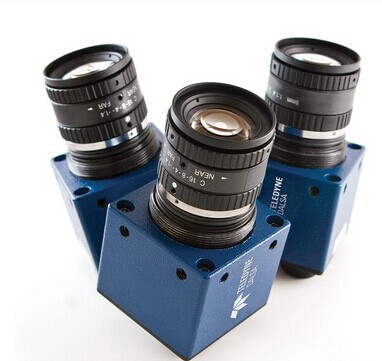 Camera
Camera
The machine comes with a camera to realize the Vision function.
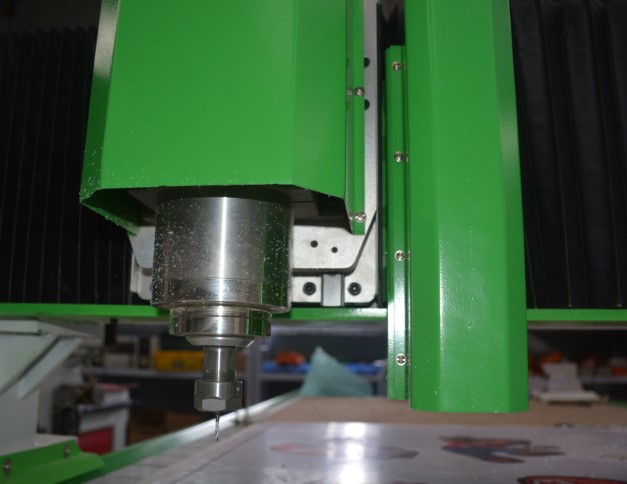 High Frequency Powerful spindle
High Frequency Powerful spindle
The High quality UTECH R2 series CNC Router machine comes standard with 3.5kw high frequency spindle. This precision spindle requires no maintenance. Fully programmable speeds from 6000 to 24000 RPM, more powerful and less noise.
 Drive Motors
Drive Motors
Patent design 1:4 gear reducer install on the driving motor, makes the motor is more powerful, and having a longer time service life.
The stepper motors are installed on all axes to ensure precise positioning of the gantry and the spindle in accordance with a predetermined program at high speed. Stepper motors are well proven high degree of reliability.
The machine is installed 4 pieces of motors.
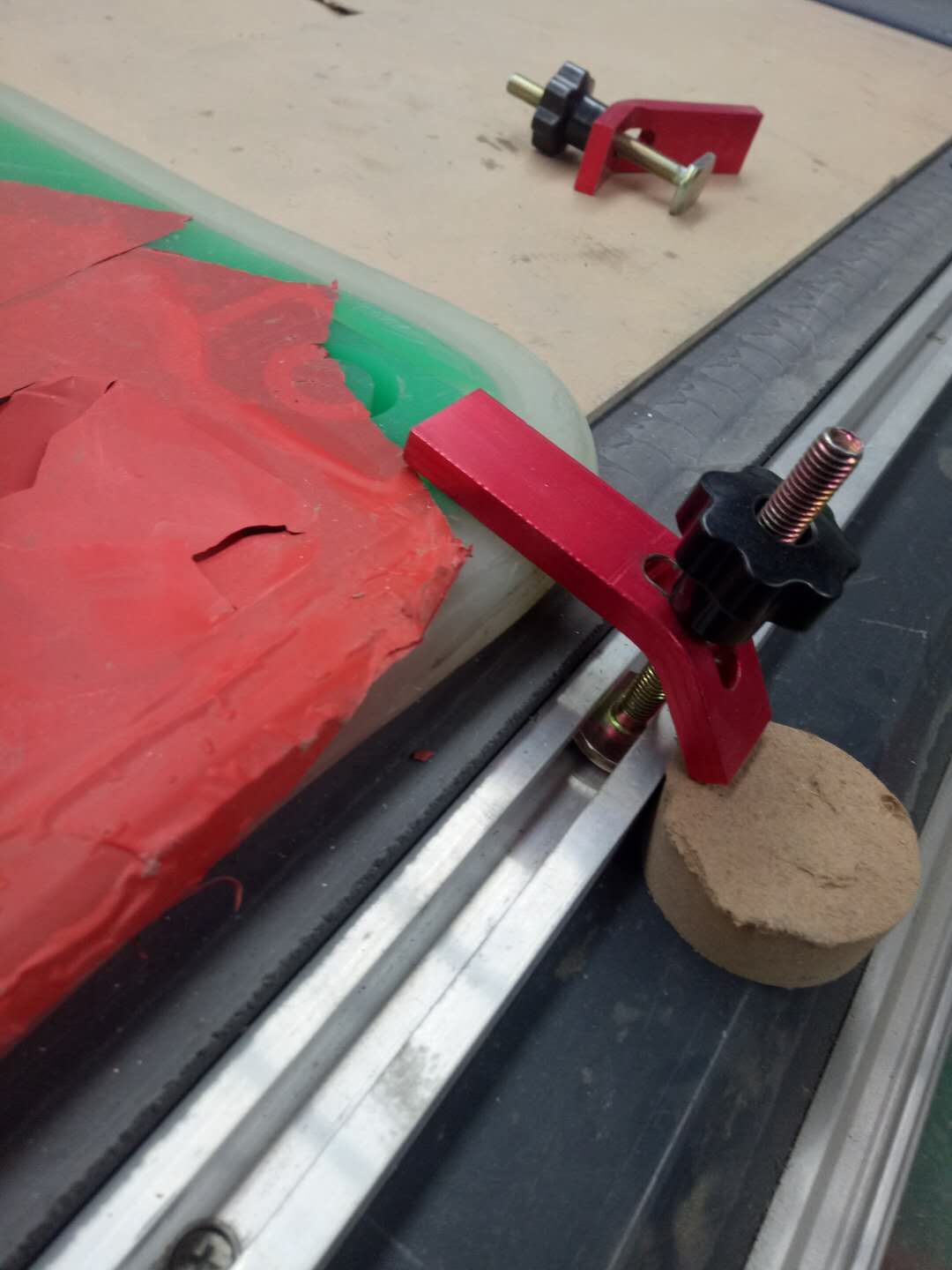 UTECH Patent pressing clamp
UTECH Patent pressing clamp
The patent design pressing clamp is convenient for the user to assemble and disassemble the material.
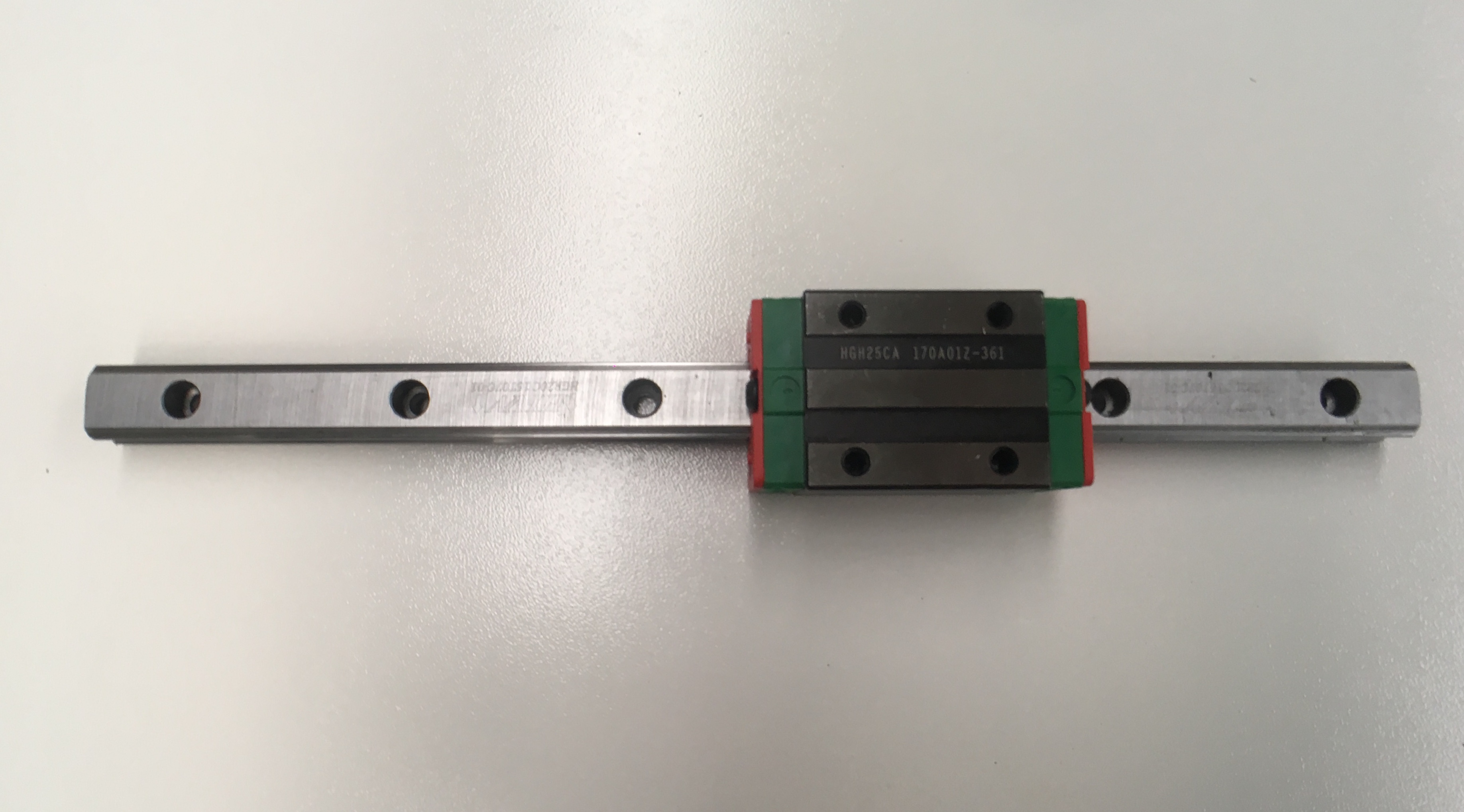 XYZ ASK Square Guide Rail(German)+Flange slider
XYZ ASK Square Guide Rail(German)+Flange slider
HIGH PRECISION LINEAR GUIDE RAIL HIGH RIGIDITY OF [ASK" (German)
Due to the increased stability and rigidity provide high precision movement of the gantryand high-speed drilling spindles in X, Y, Z. achieved high machining accuracy and durability of the machine without loss of accuracy parameters.
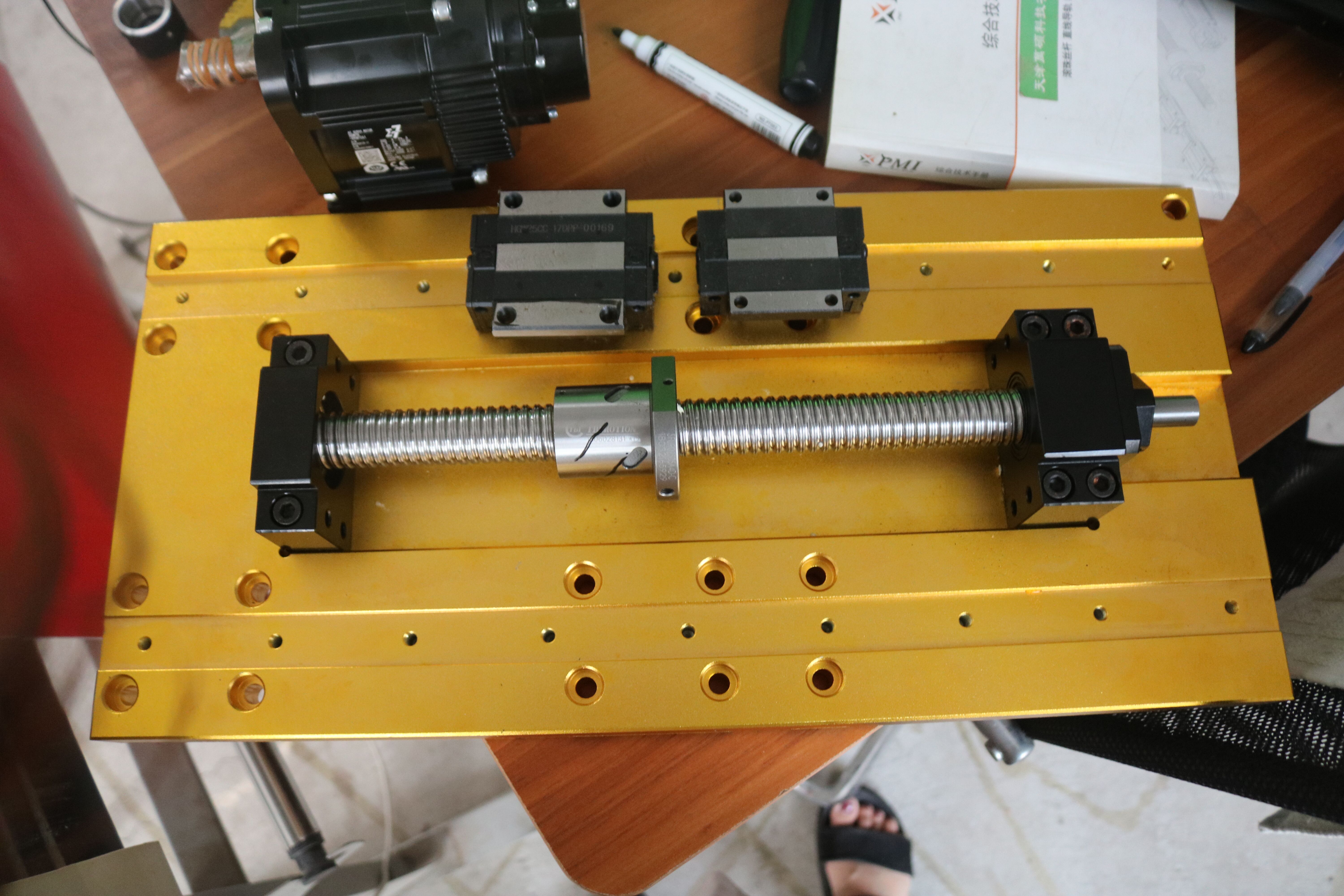 Machine handpiece
Machine handpiece
The spindle is fixed on the high quality aviation aluminum T061/6063 plate, the plate is machined by high precision CNC machining center.
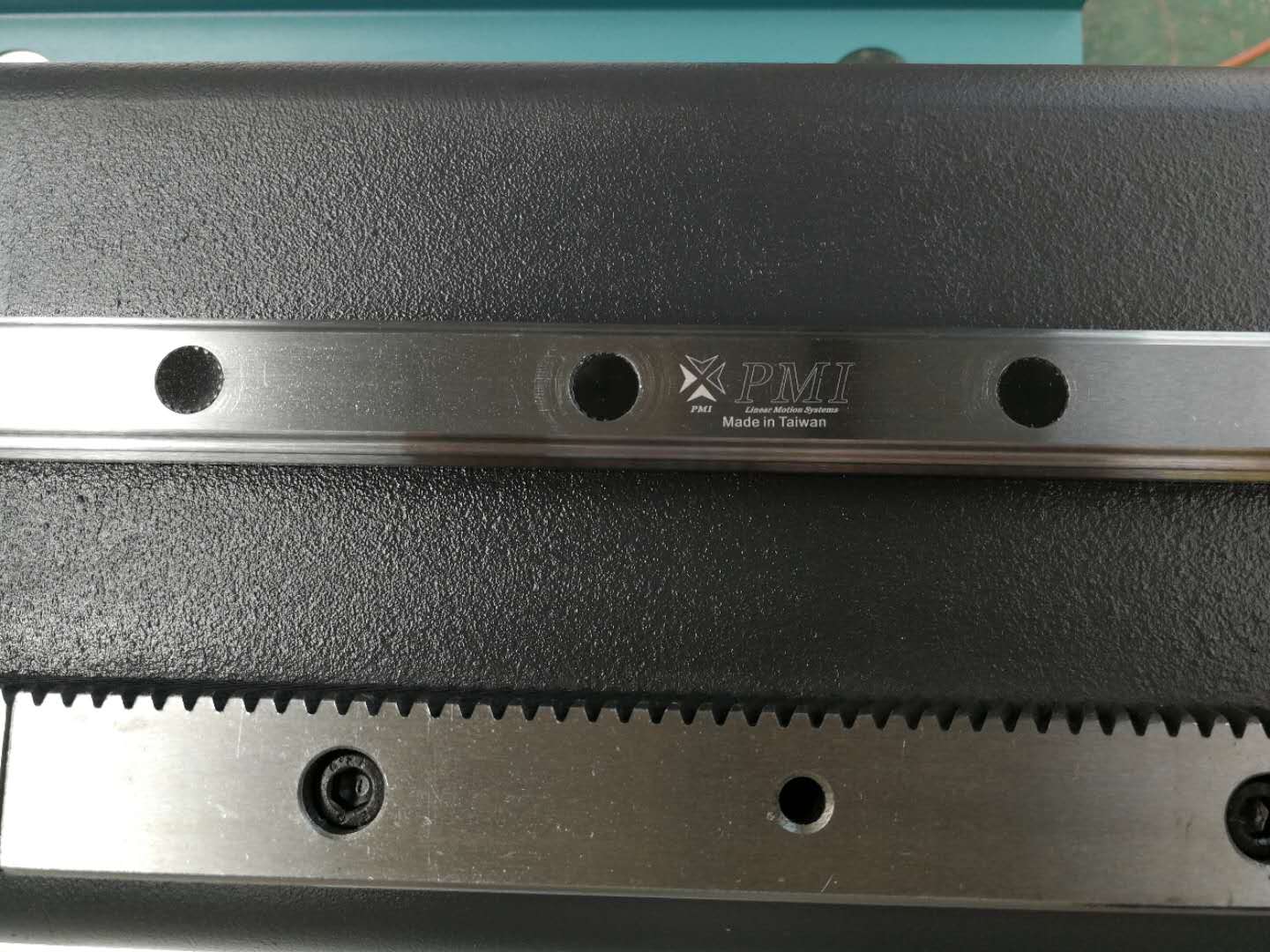 XY Helical Rack Gear(Germany)
XY Helical Rack Gear(Germany)
Unlike gears with straight teeth, oblique engages gradually, not immediately over the entire length. Helical gearing has no zone-pair gearing. In spur gear the load on the teeth is applied instantly. The teeth in helical gears are loaded gradually as you approach them in the area of gear meshing is always at least two pairs of teeth
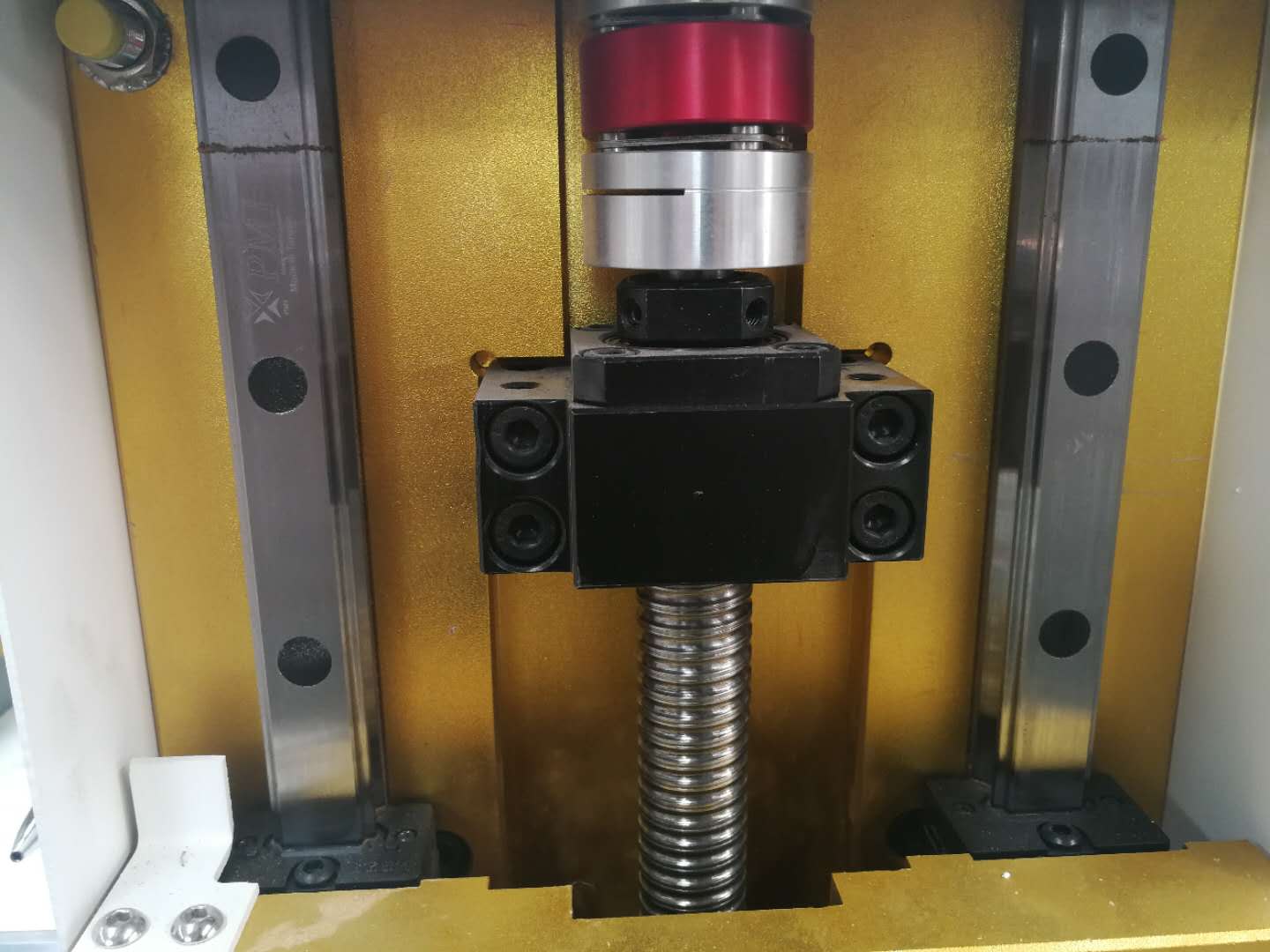 TBI High-Precision Ball-screw Transmission (Taiwan)
TBI High-Precision Ball-screw Transmission (Taiwan)
1. High transmission efficiency.
2. High transmission accuracy, smooth movement, no creep phenomenon. The ball screw drive is basically rolling friction, and the frictional resistance is small. The frictional resistance has almost no relation with the speed of movement.
3. There is no free travel in the reverse direction. After the ball screw and nut are pre-tightened, the axial clearance can be eliminated. In this way, there is no dead zone in the reverse direction, which can improve the axial transmission accuracy and axial stiffness.

Cnc Router With Ccd,Cnc Engraving Router With Ccd,3D Cnc Router With Ccd,Cnc Router With Ccd Camera
Shandong U-May CNC Technology Co., Ltd. , https://www.fiberlasers.de